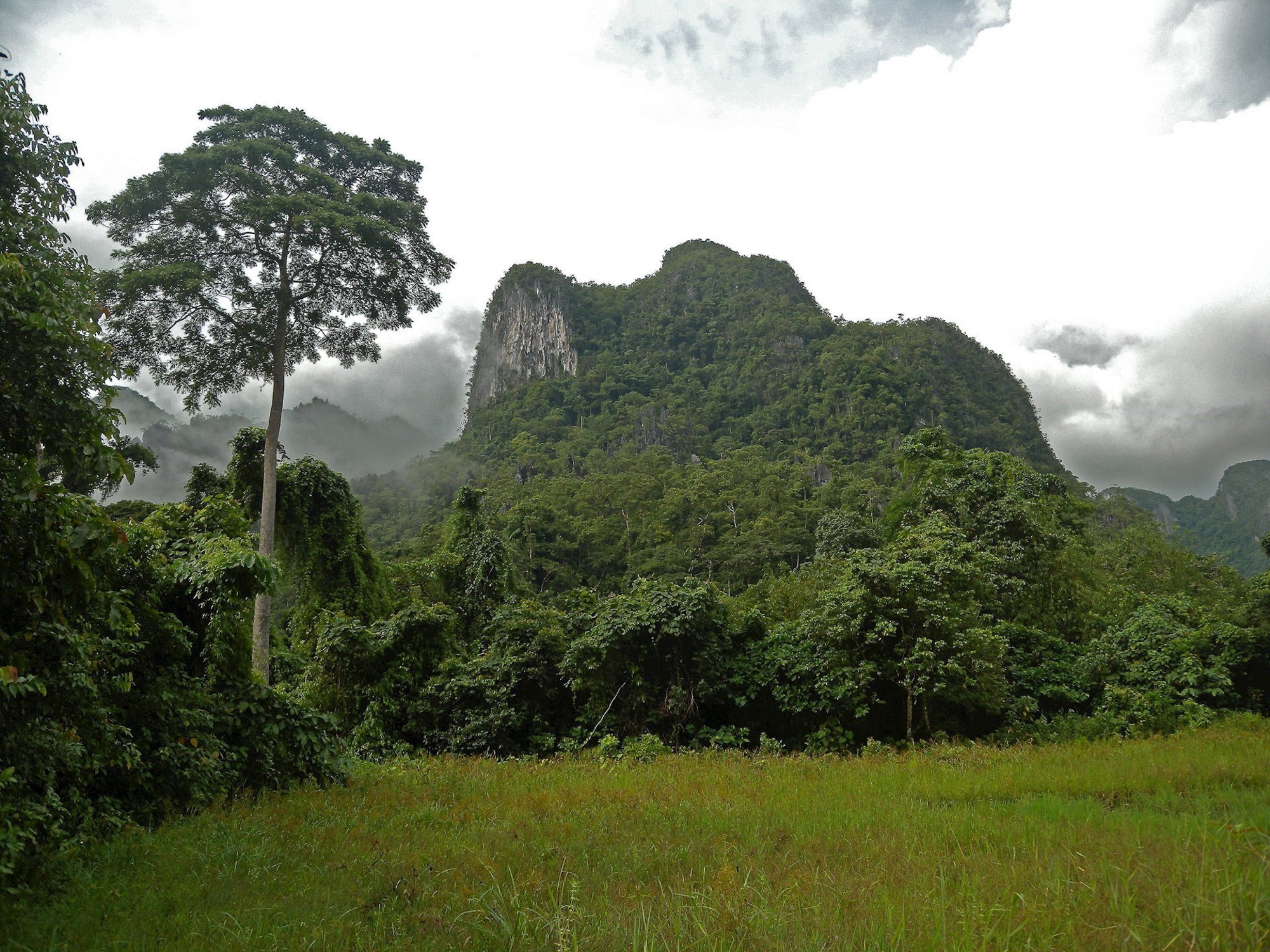
Gesneriaceae
A pan-tropical and species diverse family of ecological importance
Higher Level Classification, Nomenclature and Taxonomy
-
We employ cutting-edge technologies and methods to address the delineation of genera and relationships at the subtribal level across the Gesneriaceae.
Projects:
- Relationships and generic limits in Gesneriaceae (M. Möller, K. Nishii, J.L. Clark [Lawrenceville School]) A collaborative research project was initiated in 2017 between the Lawrenceville School (New Jersey, USA) and RBGE. Students are trained annually for five weeks in molecular sequencing techniques at RBGE. The primary goal of this project is to generate data for a phylogeny of the Gesneriaceae that includes taxon sampling represented by all genera in the family. This project was made possible by a gift from Glenn and Debbie Hutchins to the Lawrenceville School.
- Development and application of hybrid bait for target capture approaches to address species and higher level relationships in Gesneriaceae (M. Möller, K. Nishii, M. Perret, C. Christe, Ezgy Ogutcen [Conservatoire et Jardin Botaniques, Geneva])
- Hosting, updating and maintaining of the Gesneriaceae Resource Centre (GRC), continuing the Smithsonian Institution’s “World Checklist of Gesneriaceae” (M. Möller, H. Atkins, K. Nishii, et al.)
Key Publications:
Ogutcen E, C Christe, K Nishii, N Salamin, M MÖLLER, M Perret (2021). Phylogenomics of Gesneriaceae using targeted capture of nuclear genes. Molecular Phylogenetics and Evolution 157, e107068. https://doi.org/10.1016/j.ympev.2021.107068
Weber A, DJ Middleton, JL Clark, M Möller (2020). Keys to the infrafamilial taxa and genera of Gesneriaceae. Rheedea - Special Gesneriaceae Issue 30(1): 5–47. https://dx.doi.org/10.22244/rheedea.2020.30.01.02
Möller M, S Nampy, AP Janeesha, A Weber (2017). The Gesneriaceae of India: consequences of updated generic concepts and new family classification. Rheedea 27(1): 23–41. https://dx.doi.org/10.22244/rheedea.2017.27.1.5
Möller M, YG Wei, F Wen, JL Clark, A Weber (2016). You win some you lose some: updated generic delineations and classification of Gesneriaceae – implications for the family in China. Guihaia 36(1): 44–60. https://doi.org/10.11931/guihaia.gxzw201512015
Weber A, JL Clark, M Möller (2013). A new formal classification of Gesneriaceae. Selbyana 31(2): 68–94.
Contact: Michael Möller
Top image: Allocheilos cortusiflorum W.T.Wang.
Bottom image: Gasteranthus diverticularis J.L.Clark (John Clark, Lawrenceville).
Southeast Asian Genera
-
Basic taxonomic work is required for most of the Gesneriaceae genera in Southeast Asia including the large genera Cyrtandra and Aeschynanthus which are the current focus of research in this region.
Projects:
- Taxonomic revision of Cyrtandra of Borneo and Sumatra (H. Atkins, A. Kartonegoro [Bogor])
- Infrageneric classification of Cyrtandra (H. Atkins, K. Nishii, M. Möller, G. Bramley [RBG Kew])
Key Publications:
Atkins, H.J., Bramley, G.L.C., Nishii, K., Möller, M., Olivar, J.E.C., Kartonegoro, A. & Hughes, M. 2021. Sectional polyphyly and morphological homoplasy in Southeast Asian Cyrtandra (Gesneriaceae): consequences for the taxonomy of a mega-diverse genus. Plant Systematics and Evolution 307: Article 60. https://doi.org/10.1007/s00606-021-01784-x
Atkins, H.J. & Kartonegoro, A. 2021. A taxonomic revision of Cyrtandra (Gesneriaceae) in Sulawesi, Indonesia. Edinburgh Journal of Botany 78: Article 364. https://doi.org/10.24823/EJB.2021.364
Contact: Hannah Atkins
Image: Cyrtandra rantemarioensis Karton. & R.Bone
Chinese, Indian and Sri Lankan Genera
-
The redefinition of Old World Gesneriaceae genera has made significant progress over recent years, and has greatly settled now. Only a few genera require some fine-tuning. New species are now being described under the new generic framework at a rapid pace, particularly in China and India. Investigations in morphological character change is of particular interest in the florally diverse Didymocarpus.
Projects:
- Phylogeny and floral evolution in Didymocarpus (with N.S. Prasanna & V. Gowda [IISER], B. Adhikari (RBGE), D. Middleton [Singapore Botanic Garden])
- Species delineation and relationships in Indian and Sri Lankan Gesneriaceae (with S. Nampy [Calicut Unversity], S. Ranasinghe [Peradeniya Botanic Gardens])
Selected Publications:
Akhil MK, M Möller, S Nampy (2021). Lectotypifications of four names in the family Gesneriaceae. Adansonia sér. 3 44(3): 15–21. https://doi.org/10.5252/adansonia2022v44a3
Möller M (2019). Species discovery in time: an example from Gesneriaceae in China. Guangxi Sciences 26(1): 1–16. https://doi.org/10.13656/j.cnki.gxkx.20190307.002
Ranasinghe S, R Milne, R Jayasekara, S Rubasinghe, M Möller (2016). Henckelia wijesundarae (Gesneriaceae), a new endemic species from Sri Lanka and lectotypification of Henckelia walkerae and Chirita walkerae var. parviflora. Willdenovia 46: 213–224. https://doi.org/10.3372/wi.46.46202
Contact: Michael Möller
Top image: different populations of Corallodiscus lanuginosus (Wall. ex DC.) B.L.Burtt occurring in China.
Bottom image: different species of Rhynchoglossum Blume occurring in India.
Chromosome and Genome Evolution
-
Chromosomes carry the genes that ultimately define the morphology and physiology of plants. Chromosomes can vary in size, haploid and dysploid numbers and their evolution and interplay with plant structures in Gesneriaceae are the foci of this research area.
Projects:
- Meiotic studies in Streptocarpus (M. Möller, K. Nishii, N. Kelso, S. Barber)
- Chromosome and genome evolution across the Gesneriaceae (M. Möller, et al.)
Key Publications:
Möller M (2018). Nuclear DNA C-values are correlated with pollen size at tetraploid but not diploid level and linked to phylogenetic descent in Streptocarpus (Gesneriaceae). South African Journal of Botany 114: 323–344. https://doi.org/10.1016/j.sajb.2017.11.017
Zhou P, L Jie, M Möller (2017). Secondary contact, hybridization and polyploidization add to the biodiversity in the Hengduan Mountains, exemplified by the widespread Corallodiscus lanuginosus (Gesneriaceae). Plant Systematics and Evolution 303(5): 587–602. https://doi.org/10.1007/s00606-017-1392-0
Contact: Michael Möller
Top images: pollen and chromosome numbers of diploid and tetraploid Corallodiscus lanuginosus (Wall. ex DC.) B.L.Burtt.
Bottom images: FISH images on Streptocarpus Lindl. metaphase chromosomes.
Discover more
Botanics Recommends
-
Explore our range of unique gifts and more. Every purchase supports the Garden.
-
Explore our unique venues, suitable for every occasion
-
Discover a range of books inspired by the RBGE's work and collections
-
Cultivate your curiosity with our programme of courses for all ages and interests.
